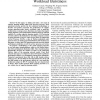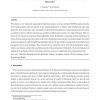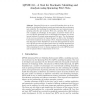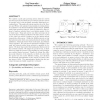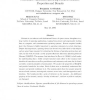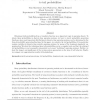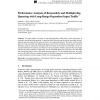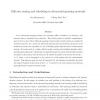TC
2010
14 years 1 months ago
2010
In this paper, we define and study a new class of capacity planning models called MAP queueing networks. MAP queueing networks provide the first analytical methodology to describe ...
PE
2010
Springer
14 years 1 months ago
2010
Springer
We introduce a new framework supporting the bottleneck analysis of closed, multiclass BCMP queueing networks in the limiting regime where the number of jobs proportionally grows t...
BIRTHDAY
2010
Springer
14 years 3 months ago
2010
Springer
Abstract Queueing Petri nets are a powerful formalism that can be exploited for modeling distributed systems and analyzing their performance and scalability. By combining the model...
PE
2010
Springer
14 years 5 months ago
2010
Springer
We consider a push pull queueing system with two servers and two types of jobs which are processed by the two servers in opposite order, with stochastic generally distributed proc...
QUESTA
2007
14 years 6 months ago
2007
Fairness is an inherent and fundamental factor of queue service disciplines in a large variety of queueing applications, ranging from airport and supermarket waiting lines to comp...
QUESTA
2007
14 years 6 months ago
2007
Obtaining (tail) probabilities from a transform function is an important topic in queueing theory. To obtain these probabilities in discrete-time queueing systems, we have to inve...
TELSYS
2002
2002
Performance Analysis of Reassembly and Multiplexing Queueing with Long-Range-Dependent Input Traffic
14 years 6 months ago
This paper studies the impact of long-range-dependent (LRD) traffic on the performance of reassembly and multiplexing queueing. A queueing model characterizing the general reassemb...
TON
2008
14 years 6 months ago
2008
Scalability considerations drive the evolution of switch design from output queueing to input queueing and further to combined input and crosspoint queueing (CICQ). However, CICQ s...
ALGORITHMICA
2005
14 years 6 months ago
2005
In an adversarial queueing network, the incoming traffic is decided by an adversary, who operates under a reasonable rate restriction. This model provides a valuable, complementar...
4OR
2006
14 years 6 months ago
2006
Abstract In this paper, the use of queueing theory for modeling uninterrupted traffic flows is evaluated. Empirical data on speeds and flows are used to evaluate speeds generated b...
